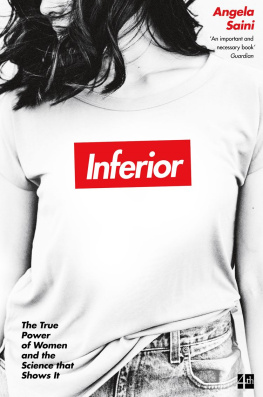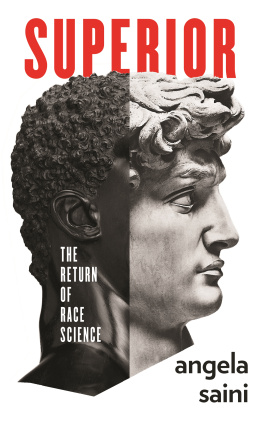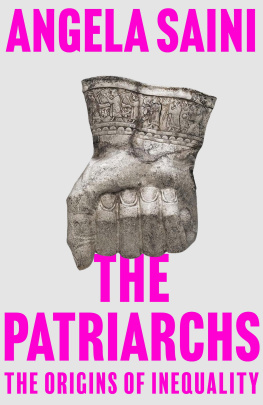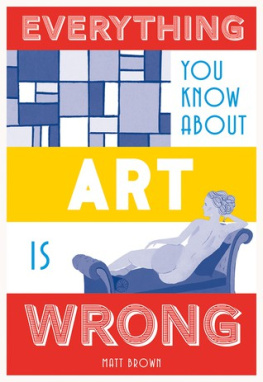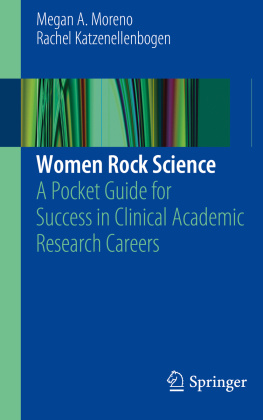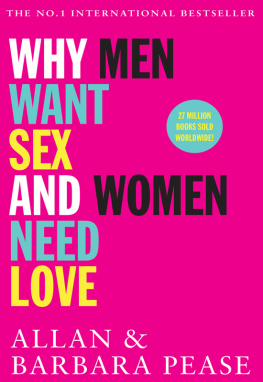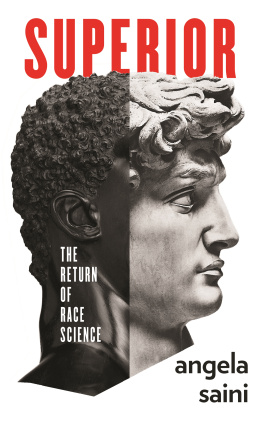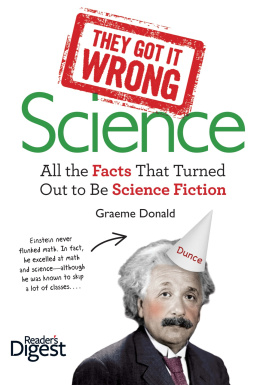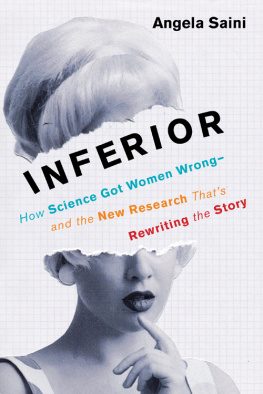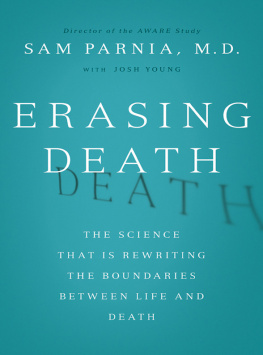Saini - Inferior: how science got women wrong - and the new research thats rewriting the story
Here you can read online Saini - Inferior: how science got women wrong - and the new research thats rewriting the story full text of the book (entire story) in english for free. Download pdf and epub, get meaning, cover and reviews about this ebook. City: London, year: 2017;2018, publisher: HarperCollins Publishers;4th Estate, genre: Romance novel. Description of the work, (preface) as well as reviews are available. Best literature library LitArk.com created for fans of good reading and offers a wide selection of genres:
Romance novel
Science fiction
Adventure
Detective
Science
History
Home and family
Prose
Art
Politics
Computer
Non-fiction
Religion
Business
Children
Humor
Choose a favorite category and find really read worthwhile books. Enjoy immersion in the world of imagination, feel the emotions of the characters or learn something new for yourself, make an fascinating discovery.
- Book:Inferior: how science got women wrong - and the new research thats rewriting the story
- Author:
- Publisher:HarperCollins Publishers;4th Estate
- Genre:
- Year:2017;2018
- City:London
- Rating:5 / 5
- Favourites:Add to favourites
- Your mark:
- 100
- 1
- 2
- 3
- 4
- 5
Inferior: how science got women wrong - and the new research thats rewriting the story: summary, description and annotation
We offer to read an annotation, description, summary or preface (depends on what the author of the book "Inferior: how science got women wrong - and the new research thats rewriting the story" wrote himself). If you haven't found the necessary information about the book — write in the comments, we will try to find it.
Saini: author's other books
Who wrote Inferior: how science got women wrong - and the new research thats rewriting the story? Find out the surname, the name of the author of the book and a list of all author's works by series.
Inferior: how science got women wrong - and the new research thats rewriting the story — read online for free the complete book (whole text) full work
Below is the text of the book, divided by pages. System saving the place of the last page read, allows you to conveniently read the book "Inferior: how science got women wrong - and the new research thats rewriting the story" online for free, without having to search again every time where you left off. Put a bookmark, and you can go to the page where you finished reading at any time.
Font size:
Interval:
Bookmark:
4th Estate
An imprint of HarperCollinsPublishers
1 London Bridge Street
London SE1 9GF
www.4thEstate.co.uk
This eBook first published in Great Britain by 4th Estate in 2017
Copyright Angela Saini 2017
Cover photograph Vanessa Serpas on Unsplash
The right of Angela Saini to be identified as the author of this work has been asserted by her in accordance with the Copyright, Design and Patents Act 1988
A catalogue record for this book is available from the British Library
All rights reserved under International and Pan-American Copyright Conventions. By payment of the required fees, you have been granted the non-exclusive, non-transferable right to access and read the text of this e-book on-screen. No part of this text may be reproduced, transmitted, down-loaded, decompiled, reverse engineered, or stored in or introduced into any information storage and retrieval system, in any form or by any means, whether electronic or mechanical, now known or hereinafter invented, without the express written permission of HarperCollins.
Source ISBN: 9780008172039
Ebook Edition May 2017 ISBN: 9780008172046
Version: 2017-12-12
For my boys, Mukul and Aneurin
For centuries, scientists have influenced decision-makers on important issues including abortion rights, granting women the vote, and how schools educate us. They have shaped how we think about our minds and bodies, and our relationships with each other. And of course, we trust scientists to give us the objective facts. We believe that what science offers is a story free from prejudice. It is the story of us, starting from the very dawn of evolution.
Yet when it comes to women, so much of this story is wrong.
I must have been about sixteen years old, on the playing field of my school in south-east London, watching a home-made rocket zoom into the sky. It was a sunny Saturday afternoon. Fresh from the nerdy triumph of having been elected chair of the schools first science society, Id organised a day of building small model rockets before setting them off. I couldnt think of anything better. The night before, I calculated whether we had enough construction materials for the crowds that were sure to come.
I shouldnt have worried. On the day, I was the only one who turned up. My chemistry teacher Mr Easterbrook, a kind man, stayed and helped anyway.
If you were the geek growing up, youll recognise how lonely it can be. If you were the female geek, youll know its far lonelier. By the time I reached sixth form, I was the only girl in my chemistry class of eight students. I was the only girl in my mathematics class of about a dozen. And when I decided to study engineering a couple of years later, I found myself the only woman in a class of nine at university.
Things havent changed much since then. Statistics collected by the Womens Engineering Society in 2016 show that only 9 per cent of the engineering workforce in the UK is female, and just over 15 per cent of engineering undergraduates are women. Figures from WISE, a campaign in the UK to promote women in science, engineering and technology, reveal that in 2015 women made up a little more than 14 per cent of their workforces overall. According to the National Science Foundation in the United States, although women make up nearly half the scientific workforce there, they remain under-represented in engineering, physics and mathematics.
Standing on that playing field by myself aged sixteen, I couldnt figure it out. I belonged to a household of three sisters, all brilliant at maths. Girls stood alongside boys as the highest achievers at my school. According to the Womens Engineering Society, theres very little gender difference in take-up and achievement in the core science and maths subjects at GCSE level in British schools. Indeed, girls are now more likely than boys to get the highest grades in these subjects. In the USA, women have earned around half of all undergraduate science and engineering degrees since the late 1990s.
Yet as they get older, fewer women seem to stick with science. At the top, theyre in an obvious minority. And this is a pattern that goes as far back as anyone can remember. Between 1901 and 2016, of the 911 people awarded a Nobel Prize, only forty-eight were women. Of these, sixteen women won the Peace Prize, and fourteen the Prize for Literature. The Fields Medal, the worlds greatest honour in mathematics, has been won by a woman only once, in 2014 by the Iranian-born Maryam Mirzakhani.
A couple of years after I graduated from university, in January 2005, the president of Harvard University, economist Lawrence Summers, gave voice to one controversial explanation for this gap. At a private conference he suggested that the unfortunate truth behind why there are so few top women scientists at elite universities might in some part have to do with issues of intrinsic aptitude. In other words, that theres a biological difference between women and men. A few academics defended him, but by and large Summers remarks were met by public outrage. Within a year he announced his resignation as president.
But there have always been gently whispered doubts.
Summers may have dared to say it, but how many people havent thought it? That there might be an innate, essential difference between the sexes that sets us apart. That the female brain is fundamentally distinct from the male brain, explaining why we see so few women in the top jobs in science. That hushed uncertainty is what lies at the heart of this book. The question mark hanging over us, raising the possibility that women are destined never to achieve parity with men because their bodies and minds simply arent capable of it.
Even today, we feed our babies fantasies in pink or blue. We buy toy trucks for our boys and dolls for our girls, and delight when they love them. These early divisions reflect our belief that theres a string of biological differences between the sexes, which perhaps shape us for different roles in society. Our relationships are guided by the notion, fed by many decades of scientific research, that men are more promiscuous and women more monogamous. Our visions of the past are loaded with these myths. When we picture early humans, we imagine powerful men striding out into the wilderness to hunt for food, while softer, gentler women stay back, tending fires and caring for children. We go so far as to wonder whether men may be the naturally dominant sex because theyre physically bigger and stronger.
In the journey to understand ourselves better and to distil facts from fiction, we of course turn to biology. It is science, we believe, that holds the power to resolve the dark, niggling feeling that never seems to go away, no matter how much equality legislation is passed. The feeling that we arent the same. That, in fact, our biology might even explain the sexual inequality that has existed, and continues to exist, across the world.
This is dangerous territory, for obvious reasons. Feminists in particular have passionately argued against having our biology determine how we live. Many believe that what science says shouldnt be a factor in the battle for basic rights. Everyone deserves a level playing field, they say and theyre right. But then, we cant simply ignore biology either. If there are differences between the sexes, we cant help but want to know. But more than that, if we want to build a fairer society, we need to be able to understand those differences and accommodate them.
The problem is that answers in science arent everything they seem. When we turn to scientists for resolution, we assume they will be neutral. We think the scientific method cant be biased or loaded against women. But were wrong. The puzzle of why there are so few women in science is crucial to understanding why this bias exists. Not because it tells us something about what women are capable of, but because it explains why science has failed to rid us of the gender stereotypes and dangerous myths that weve been labouring under for centuries. Women are so grossly under-represented in modern science because, for most of history, they have been treated as intellectual inferiors and deliberately excluded from it. It should come as no surprise, then, that the scientific establishment has also painted a distorted picture of the female sex. This, in turn, has skewed how science looks and what it says even now.
Font size:
Interval:
Bookmark:
Similar books «Inferior: how science got women wrong - and the new research thats rewriting the story»
Look at similar books to Inferior: how science got women wrong - and the new research thats rewriting the story. We have selected literature similar in name and meaning in the hope of providing readers with more options to find new, interesting, not yet read works.
Discussion, reviews of the book Inferior: how science got women wrong - and the new research thats rewriting the story and just readers' own opinions. Leave your comments, write what you think about the work, its meaning or the main characters. Specify what exactly you liked and what you didn't like, and why you think so.

